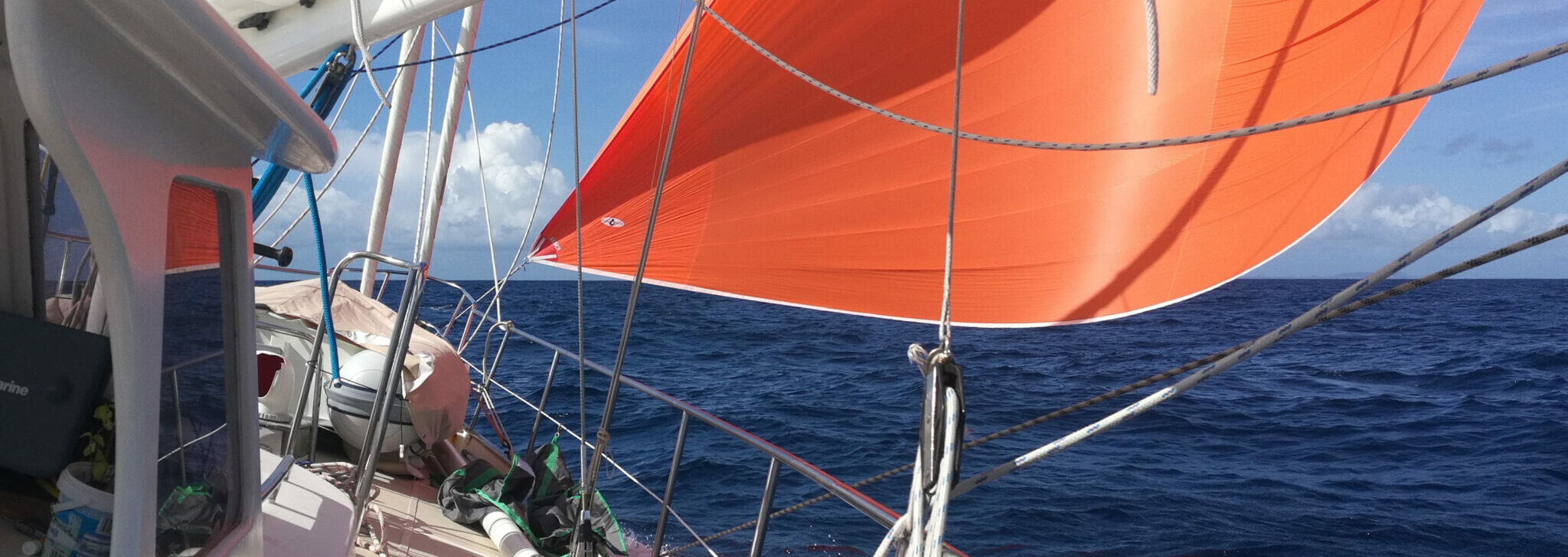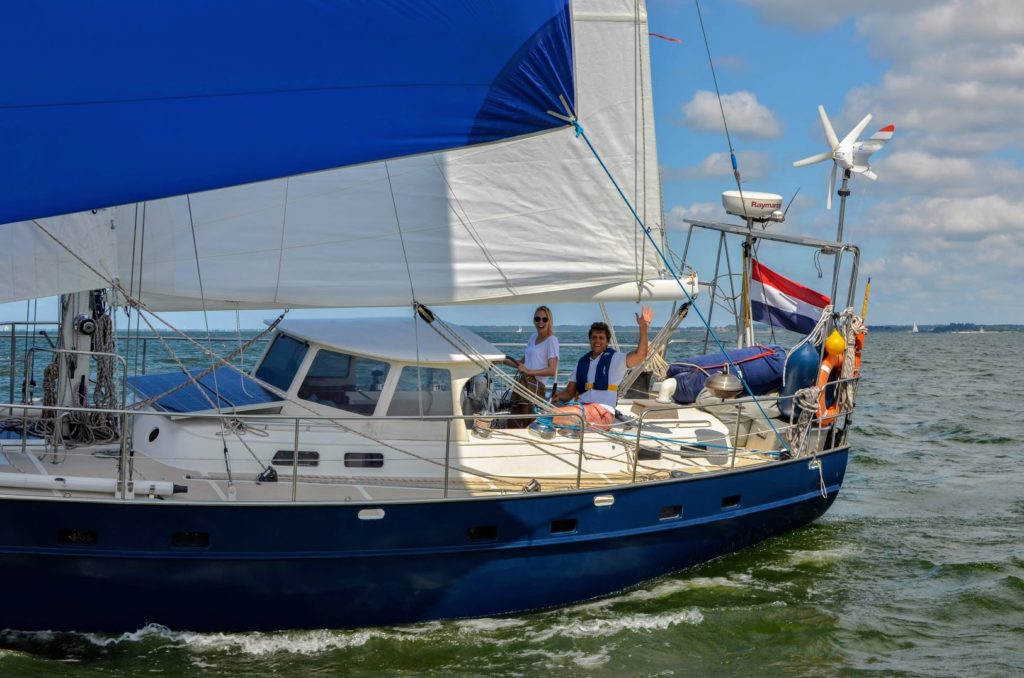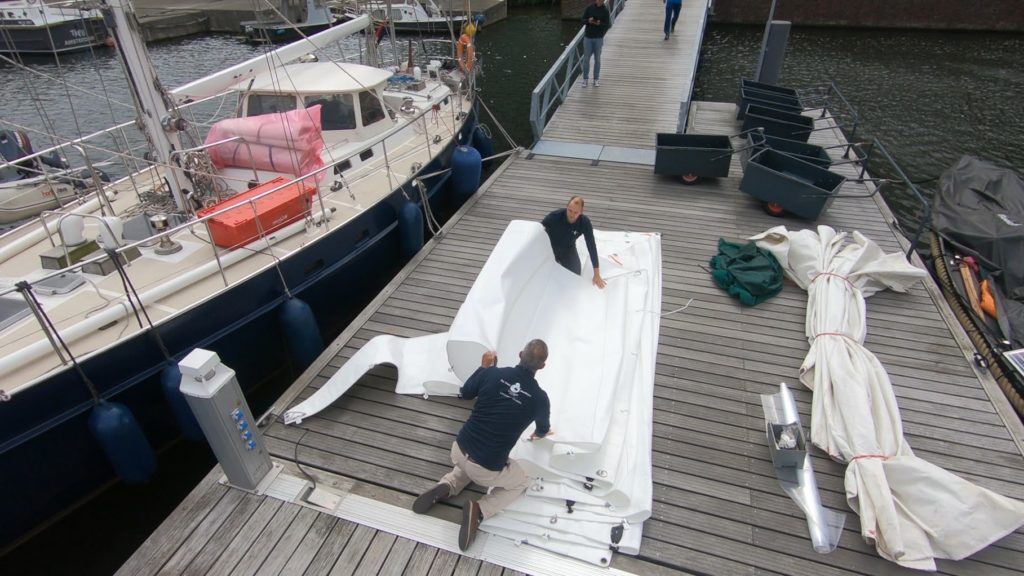
Departures under Sail: Blue Beryl
Many sailors now know the story of the Blue Beryl, the beautiful Koopmans 44 that sank in the Amsterdam Marina after a long journey from Asia. In recent years Sander and Yvette have done everything to get the ship back in top condition, and with success! And then... In the year they left, something happened that we all knew from movies: the pandemic. Did they leave at all?
The short answer: yes! Determined these two were to cast off the ropes. And they did. This article wouldn't have been here otherwise either 😉 And remarkably, the adventurers said they noticed pretty little of it. "We only had to do a test and a mouth mask for the first time in St. Lucia," says Sander. "We sailed before corona, in Europe," Yvette adds. "In retrospect, it's easy to talk about whether you should go or not. For us it worked out great. We would rather be on the boat with the two of us, with enough food for six months, than in the office or on the train where the risk of infection is much higher," says Sander, "We can recommend it to everyone!"
The journey started, but is now on pause for a while
From southern Europe, the Blue Beryl, the 16-ton steel ship, heads for the Canary Islands. This is followed by the great crossing to the Carrieb. St. Lucia, Martinique and St. Vincent and the Grenadines will be visited, followed by Bonaire, Curacao and Aruba. Sander and Yvette are currently in the Netherlands for a short break. "The idea is to go around the world, but with the current situation we don't want to go through the Panama Canal yet. By taking this break we are keeping our budget whole. We work in the Netherlands and see our friends and family again." Yvette loves exploring and plotting possible routes. "It's really a hobby to think out routes, to see what's possible. It makes me so curious."
"From February to April we can go through the channel. In November you already have to go into hiding for the cyclone season on the Pacific, then we want to spend the winter in New Zealand or Australia. In which year we make that trip, we don't know exactly yet. Maybe next season, maybe later," says Yvette. Sander adds: "That's the beauty of our world trip, the plans can always be changed." Ultimately, they hope to complete the round through Asia, along the bottom of South Africa, back towards the Carrieb and then to Europe, where they might go a bit further north or towards the Med. What will they do later when they get back to their Blue Beryl? "We're not going to decide that until it's almost here. When we're packing our bags."
Orcas, shipwreck and storm: the fiercest moments on board
"As we sailed into the anchorage we said to each other, 'so, we survived this too'" begins Sander. "In the end we didn't see them, but they were there in great numbers." Sander is talking about the orcas, which have been attacking sailboats in southern Europe since last year. Some boats have significant damage, the beasts have tremendous power.
"We weren't really scared, our ship is steel and a long keeler. We don't think they would really have fun with that." When asked if they had a plan for when they did come face to face with the orcas, Yvette replied, "There was a protocol that sailors had made though. Turn off everything that makes noise, like the engine and the depth gauge. And don't lock the rudder. We had the mindset 'they want to play, and not eat us'. That made us less scared." They have seen some sailors in shock whose ship had to be towed into port. Not a pleasant sight...
Every world sailor has to deal with it: storms. Sometimes sooner than you'd like. On their first multi-day crossing, Yvette and Sander got a tough finish: the tail end of Biscay. "We were really thrown in all directions. Over 40 knots of wind and 2 meter high waves from 2 sides. It was exactly what the wave is notorious for, right where the sea floor rises very sharply," says Yvette. "I even started hallucinating about lifeboats and helicopters, I really saw them! I had complete stress, was completely stuck in that mode. I hadn't slept and had to hold on to the winches to avoid being thrown out." How did they cope with such intense weather? "One of the things we started doing is that I talked Yvette all the way through an act when I was doing something on deck. And we regularly called out 'Are you alive?'", Sander recounted.
Also on the Atlantic crossing, the couple had to deal with a big unexpected storm that lasted for days. "Every night the weather picked up, you could hear it coming. I thought 'oh no, here we go again'. We also had quite a bit of thunder". The crossing otherwise went very well. All sails were set, the wind varied from 8 - 50 knots. They had to eat a lot of fish because the freezer was not yet running at full speed. Mahi mahi, wahoo and a large number of tuna.
We also discuss the violent shipwreck, which Yvette and Sander witnessed, in St. Vincent and the Grenadines. "Every time I saw something floating, for a moment I thought it was a corpse," Yvette says. "But fortunately we were able to save someone from drowning. We hope never to experience anything like that again.".


Spacious sail wardrobe, in Zeeland still a sail off board
"We chose Hydranet, which is really incredibly beautiful and strong. It stays in shape well during intensive use and high winds, it has dyneema in it. We can certainly go around the world with it. Our wardrobe consists of 3 white sails: the mainsail, the yankee (a high cut jib) and a cutter jib. We also have a spinnaker and 2 gennakers." tells Sander. "On the last day in Zeeland we decided to take the third gennaker off board. It takes up quite a bit of space anyway!". Why 2 gennakers? "We have an old smaller gennaker that we sailed at night. That one is easier to bring in and it's safer if there's a squall coming that you can't see in the dark."
The bright pink spinnaker of 150m2 and the orange gennaker (130m2) are brand new and specially custom made by De Vries Maritiem. This colors beautifully with the dark blue hull of the ship. "They are both in a trunk with which you can easily hoist the sail or take it down. You can even do that on your own," says Sander.
And the setup? "The yankee is usually on the boom at windward. We sail the cutter jib at lee, to counteract the rocking. That also gives you more speed. The mainsail we secure with a bullet jib," says Sander.
When asked if they would like to make any changes to the sail line, Sander laughingly replied, "Yes, 4 more kitesurfing sails!"
The choice for De Vries Maritiem was an easy one!
Sander worked for De Vries Maritiem for two years, so the choice for sailing from De Vries Maritiem was logical. In addition, Sander says, De Vries Maritiem has already advised and helped a lot of departing sailors. "I have seen many clever things, such as an extra reefing eye to reduce the size of the mainsail so that you don't need a storm sail. Those years of experience, that gives you confidence."
"We always check along the way to see if we see any sails from our sailmaker," Yvette explains. "And we carry a sewing machine and spare equipment to help other sailors!" adds Sander. They have already been able to provide a number of fellow boats with smart solutions.
Tips for other leavers?
- Don't skimp on your sails! On the road, sail is often much more expensive, and so are repairs. Above all: your sails provide safety, you really depend on them.
- Small tarps for above the cockpit, so you can sit out of the sun and out of the rain while sailing.
Finally, we discuss what the couple is looking forward to when they are back on board. "The freedom, the unplanned, no agendas," Yvette dreams. "The neighbor who comes by and asks if we'll go on an outing, and not having to make plans for 3 weeks from now. Who knows if you'll feel like it then!". Beautiful words, with that we close the interview.
Wishing you a very nice continuation of your journey!